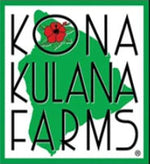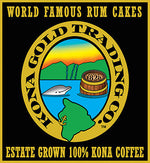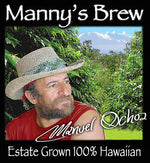Ever wonder about the journey your coffee takes before landing in your cup?
Most coffee lovers don’t realize the intricate journey coffee makes, from tiny seeds to aromatic brewed perfection.
At Buddha’s Cup, we not only grow Kona coffee, but we roast it ourselves, giving us a full view of the process from seed to sips. Understanding how coffee roasters differ from coffee farms gives you valuable insight into the coffee you enjoy every day.
Let's explore how these two distinct yet interconnected roles shape your coffee's taste and quality.

Key Takeaways
- Coffee farms grow, harvest, and process coffee cherries.
- Coffee roasters transform green coffee beans into roasted beans.
- Elevation, climate, and processing methods influence coffee flavor.
- Roasting profiles determine the coffee’s taste and aroma.
- Buddha’s Cup uniquely handles both farming and roasting, ensuring quality and traceability.
What Are Coffee Farms?

Role of Coffee Farms in Coffee Production
Coffee farms are the heart of how coffee is made. Farms plant and nurture coffee trees, carefully maintaining them until they bear fruit—coffee cherries. Growing coffee takes patience, often several years before the first cherries appear.
When cherries ripen, farmers use careful methods, such as selective harvesting, selectively choosing only those perfectly matured. This careful selection ensures high-quality beans, shaping the taste and quality of your coffee
Once harvested, coffee cherries undergo initial processing to become green beans, ready for roasting.
The coffee production process significantly depends on critical factors like elevation, climate, soil quality, and coffee variety. High elevations, cooler climates, and volcanic soils contribute to richer flavors.
Buddha’s Cup manages four biodynamic coffee farms across the Kona region of Hawaii.
These farms uniquely benefit from Kona’s ideal high altitude, steady climate, and nutrient-rich volcanic soil, enabling us to cultivate distinct coffee varieties, creating exceptional single origin coffee flavors.
Source: Coffee and Health
Farming Process (From Seed to Cherry)
The farming process from seed to cherry at coffee farms like ours at Buddha’s Cup is detailed and methodical.
We begin by carefully planting high-quality coffee seeds in nutrient-rich volcanic soil. These seeds grow into small seedlings, which we then transplant into fields where they mature into coffee trees. Throughout their growth, coffee trees need constant attention, including regular watering, fertilizing, and pruning.
Pruning helps the trees direct their energy toward producing healthy cherries instead of unnecessary branches. As cherries ripen, our experienced farmers selectively harvest only those at peak maturity, ensuring exceptional quality.
Our farms are specifically located at high altitudes in Kona, Hawaii, benefiting from cooler temperatures and steady climate conditions.
This optimal environment significantly enhances the coffee production process, resulting in beans with the unique, rich flavors for which Kona coffee and our distinctive single-origin coffee are known.
Post-Harvest Processing on the Farm
After cherries are harvested at coffee farms, they enter a vital stage known as post-harvest processing. Several methods can be used, including washed, natural, or honey processing.
Washed processing removes the cherry pulp and rinses the beans with water, producing coffee with a clean, bright taste. Natural processing means drying the beans inside their fruit, giving the coffee a sweet and full-bodied flavor.
Honey processing is a balance between the two, partially removing the pulp and drying the beans to highlight a gentle sweetness.
The chosen processing method impacts how much moisture stays inside the beans, influencing their final taste and aroma. Careful handling during this stage is crucial to maintaining bean quality.
At our farms, we carefully manage each processing step to ensure optimal conditions, preserving the integrity of the beans and enhancing the rich, unique flavors of our single-origin coffee and premium Kona coffee.
What Are Coffee Roasters?

Role of Coffee Roasters in the Coffee Journey
What is a coffee roaster? A coffee roaster plays an essential role in how coffee is made, transforming green coffee beans harvested from coffee farms into aromatic, flavorful roasted beans ready for brewing.
This roasting process involves applying heat carefully, changing the green beans’ physical and chemical makeup. During roasting, beans change color from green to brown, and their flavors and aromas become pronounced.
Roasting can be done in various ways, resulting in different roast profiles:
Light Roasts: Roasted at lower temperatures, retaining more of the beans' original characteristics. These coffees often taste bright, fruity, and slightly acidic.
- Medium Roasts: Balanced roasting that produces well-rounded coffee, showcasing both the beans' natural flavors and the roasted notes.
- Dark Roasts: Roasted longer at higher temperatures, offering deeper, richer flavors and reducing acidity, often with chocolatey or smoky notes.
Coffee roasters might operate independently from coffee farms or can be integrated within farm operations, as we do, allowing complete control from farm to cup.
How Roasting Impacts Flavor and Aroma
Roasting coffee is a careful process that directly shapes how your coffee tastes and smells.
Timing, temperature, and the origin of the beans all make a big difference in the result. A coffee roaster uses heat and time to change green beans into roasted beans. Getting the roast right means knowing exactly when to stop the process to bring out the best flavors.
Here is how roasting affects the flavor and aroma of your coffee:
- Timing: The length of time beans are roasted changes their flavor. Shorter roasting times (light roast) keep more of the original bean’s taste. Longer times (dark roast) bring out richer, smokier flavors.
- Temperature: High temperatures cause beans to develop deep, strong flavors. Lower temperatures help highlight lighter, fruitier notes.
- Bean origin: Beans from different coffee farms will react differently to roasting. Beans grown in high-altitude regions like Kona often develop complex flavors.
- Roast level:
- Light roasts taste bright, fresh, and sometimes acidic, keeping more of the bean’s unique character.
- Medium roasts offer balance and a rounded flavor.
- Dark roasts taste bold, deep, and have less acidity, with flavors of chocolate or toast.
- Roasting innovation: Some producers now use new techniques, such as UVB light infusion before roasting, to bring out more of the beans’ natural flavors and aromas. This pre-roast step can give the coffee a cleaner flavor and a silkier feel, helping select roasters stand out.
The coffee production process is never complete without roasting. The right technique transforms green beans into the Kona coffee or single-origin coffee you look forward to in every cup.
Source: Research Gate
The Art and Science of Roasting
To make excellent coffee, both coffee farms and coffee roasters must work closely together during every step of the coffee production process. The journey begins at the farm. Conditions and care given to the plants shape how the beans will taste.
Only high-quality beans from well-managed farms will create great coffee after roasting.
Roasters take these beans and use timing and temperature to bring out their best flavor. If either step is not done well, the final cup will not taste as good. Great coffee depends on strong teamwork between the farm and the roaster.
Every cup of Kona coffee or unique single-origin coffee you enjoy, or any experience during a coffee farm tour, comes from this partnership and careful work at every stage.
How Buddha’s Cup Combines Farming and Roasting

Our team manages every part of the coffee journey, starting with planting seeds and caring for young trees on our coffee farms, all the way through to roasting each bean in our own facility.
By keeping every step in our hands, we have full control over the coffee production process. This means we can promise each batch is fresh, high-quality, and fully traceable from the field to your cup.
Here is how we bring you a better cup of coffee:
- We grow coffee plants in mineral-rich volcanic soil. Our team tracks climate and elevation closely, because small changes can affect how the coffee tastes. Healthy trees and great soil create strong, flavorful cherries.
- After growing, we carefully pick ripe cherries and use careful processing to turn them into green coffee beans. Each stage of the coffee production process is checked to protect bean quality and taste.
- Roasting is done right at the farm. We use both traditional techniques and new ideas to create distinctive flavors. Every step in our process is designed to bring out the depth, aroma, and character that set our coffee apart. You get coffee that is fresh, flavorful, and unique to our farms.
- Every batch comes from estate-grown beans. Our coffee is true single-origin coffee with the special character and taste of Kona
Because we manage every step ourselves, you always know where your coffee is grown, how coffee is made, and who is responsible for the flavor in your cup.
Every sip is fresh, and the traceability we offer means you can trust what you are drinking. This hands-on approach is what makes our Kona coffee different, and why so many people keep coming back for more.
Planning a Visit: Experience Both Worlds at Buddha’s Cup
A visit to Buddha’s Cup is much more than a walk through coffee farms. Our immersive coffee farm tour in Holualoa, Hawaii, gives visitors a front-row seat to see every part of how coffee is made.
The tour begins among rows of lush coffee trees, where you can see the plants up close and learn about their care and growth.
Guests are welcome to watch the harvesting process and understand what it takes to pick only the ripest cherries. You will observe how our team handles the important steps of the coffee production process, from sorting and drying the beans to roasting them right on site. This is a rare chance to experience every step, from seed to cup, all in one place.
The highlight for many is tasting freshly roasted, 100% Kona coffee, prepared just moments after roasting. Our tours offer a personal connection to the farm and the people behind your favorite brew.
How Can You Experience the Full Coffee Journey?

Every cup of coffee has a story. When you drink a great cup, you taste the result of many careful steps, starting at coffee farms and ending with skilled coffee roasters.
At the farm, teams grow and care for coffee trees, harvest ripe cherries, and handle the first steps in the coffee production process. The work does not stop there. Roasters then use their expertise to turn green beans into the rich, aromatic coffee you know.
This teamwork shapes the taste and freshness in your cup.
Buddha’s Cup stands out because we manage every step from start to finish. We grow our own coffee, process it, and roast every batch ourselves. This means our Kona coffee and single origin coffee can be traced back to the exact field and day they were picked and roasted.
You always know how coffee is made here—no mystery, just pure quality and full freshness.
If you want to experience this journey for yourself, join us for a coffee farm tour in Holualoa, Hawaii. See the plants, meet the people, and taste our coffee straight from the roaster. Or, shop our collection to bring the Buddha’s Cup experience home. Every sip connects you to our farms and our passion for coffee.
FAQs
1. What is the difference between coffee farms and coffee roasters?
Coffee farms are the starting point for every coffee bean. They focus on growing, nurturing, and harvesting coffee cherries, which hold the beans inside. The location of the farm, climate, soil, and type of coffee plant all impact the bean’s quality and flavor.
Once the cherries are picked and processed into green beans, coffee roasters take over.
Coffee roasters use heat, time, and technique to transform these green beans into the roasted coffee you know and love. Roasting brings out the flavors and aromas unique to each bean, depending on its origin and how it was grown.
Both play crucial roles in the coffee production process, and the best coffee comes from careful teamwork at every step.
2. How does elevation affect the taste of coffee from Kona coffee farms?
Elevation shapes every cup of Kona coffee. Up on the slopes, cooler air and less direct sunlight slow down photosynthesis, which means the coffee cherries take their time to ripen. This slower process allows more flavor to develop in every bean. It is a signature trait of coffee grown high above the sea.
This slow growth gives beans more time to develop complex sugars and flavors.
As a result, coffee from higher elevations often has a brighter acidity, more pronounced flavors, and a clean, crisp finish.
Kona’s volcanic soil, combined with steady rainfall and sunny mornings, further enhances the unique taste found in every cup of Kona coffee. That’s why single origin coffee from this region stands out among coffee lovers around the world.
3. What do you see and learn during a coffee farm tour at Buddha’s Cup?
A coffee farm tour at Buddha’s Cup in Holualoa, Hawaii, lets you see the full coffee journey up close.
You’ll walk among rows of healthy coffee trees, learn about planting and pruning, and watch the careful process of harvesting ripe cherries. The tour explains how the beans are processed—washed, dried, and sorted—then moves on to the roasting room, where you see how a coffee roaster transforms green beans into rich, aromatic coffee.
Visitors get to taste freshly roasted 100% Kona coffee and ask questions about the coffee production process. It’s a chance to experience how coffee is made from seed to cup and understand the skill behind every brew.
4. How does Buddha’s Cup keep its coffee so fresh and traceable?
Buddha’s Cup controls the entire coffee production process, from planting seeds on their coffee farms to roasting beans in their own facility.
This full control means we can track each batch of coffee, knowing exactly where and when it was grown, picked, processed, and roasted.
Estate-grown single origin coffee is handled with extra care at every step. No beans sit in storage or travel long distances before roasting. This attention to detail guarantees unmatched freshness and full traceability for every cup.
When you buy Buddha’s Cup coffee or take a farm tour, you get coffee you can trust—from farm to cup.
5. Why do roast profiles (light, medium, dark) matter when choosing coffee?
Roast profiles play a big role in how coffee tastes and smells. Light roasts highlight the bean’s original flavors with bright, fruity notes and more acidity. Medium roasts offer a balanced profile, combining some of the bean’s natural taste with richer, roasted notes. Dark roasts stay in the roaster longer, bringing out bold, strong flavors, low acidity, and hints of chocolate or spice.
Roast level also affects caffeine. Lighter roasts usually have more caffeine, since roasting burns off some of it over time. That is why you often see “breakfast blends” as light roasts for a gentle energy boost and “after dinner” coffees as dark roasts for a bolder finish with less caffeine.
Knowing what goes into the roasting process helps you choose the right cup for your taste. This knowledge lets you enjoy the full experience of Kona coffee or any single origin coffee you try.















